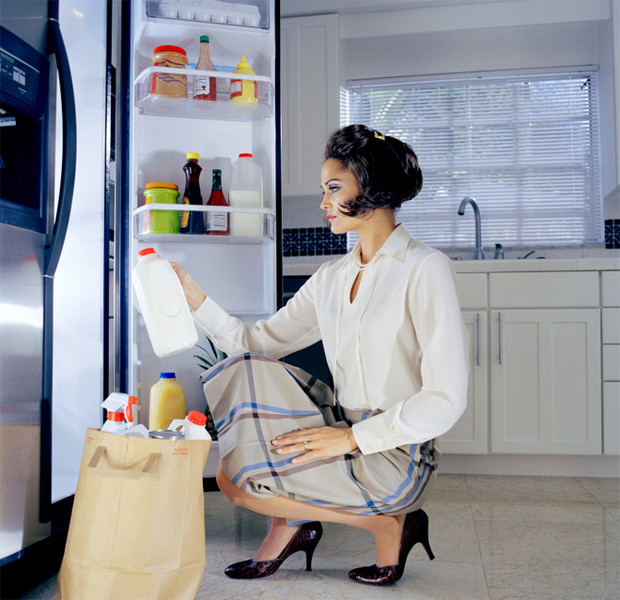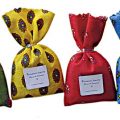Doors
Let's start from the beginning, namely from the doors.It is worth noting that this is the warmest part of the refrigerator, so those products that are resistant to temperature fluctuations will feel comfortable here. You can store: seasonings, juices and other non-perishable food. You cannot store: because the refrigerator doors are often opened and the temperature here is relatively high, it is not recommended to put eggs, milk and dairy products here. Photo: Getty Images
Photo: Getty Images
Top of the fridge
Let's move on.Remember that this space is not some kind of "attic", so it is not advisable to put bottles or bread here - because the refrigerator has a condenser coil that pumps warm air to regulate the temperature, and this heat rises to the combi steamer. Therefore, the upper part heats up quite quickly. This is detrimental to wine. Especially if you suddenly decide to hide a bottle there that costs as much as a small car. Bread does not need such storage either: it quickly spoils and gets moldy.
Top shelves
Next on our list is the partrefrigerator, where a uniform temperature is maintained. Therefore, you can put the part of the food that no longer needs to be processed here. You can store: ready-made meals (for example, leftovers from dinner), drinks, meat delicacies, sausages, berries, as well as greens, which must first be placed vertically in a container with water and covered with a plastic bag.
Bottom shelves
This part of the refrigerator supportsthe lowest temperature. And to keep your products healthy, make sure these shelves are not overcrowded and air can circulate freely. You can store: raw meat (it is important to keep it in its original packaging, on a plate or improvised stand), eggs, fish, seafood, dairy products.
Crates
This space will help to provide morehumid conditions for food. For example, vegetables and fruits will feel at ease here. But it is important not to put them all in one pile, because, say, apples, peaches, plums, pears and melons produce ethylene, which helps them ripen faster. And this chemical can cause your vegetables to turn yellow and spoil prematurely. Therefore, it is optimal to store vegetables in one drawer and fruits in another.
Freezer
Let's move on to the main part of the refrigerator,intended for storing frozen products. Here you can keep ice, frozen fruits, meat, fish and semi-finished products (for example, tortillas, dumplings, ravioli, pasta with sauce and even eggs). Do not put bread here, otherwise it will dry out. It is necessary to ensure that all products are tightly packed in containers (plastic containers or bags). This will help to optimize space and save energy. In addition, products in this form can be stored for quite a long time.
Do not recommend to store in the refrigerator
Onions, zucchini, potatoes are necessarykeep them in a dark cupboard or pantry, but do not expose them to high humidity or freezing. Fresh tomatoes should also be kept at room temperature (you can in boxes), otherwise they will mold and turn black. Avocados also feel great at room temperature and ripen much faster. If you plan to use greens within a couple of days, there is no point in putting them in the refrigerator. Nuts, flour, oil (sunflower, olive and other types) are best kept in cupboards, but in a cool place.









